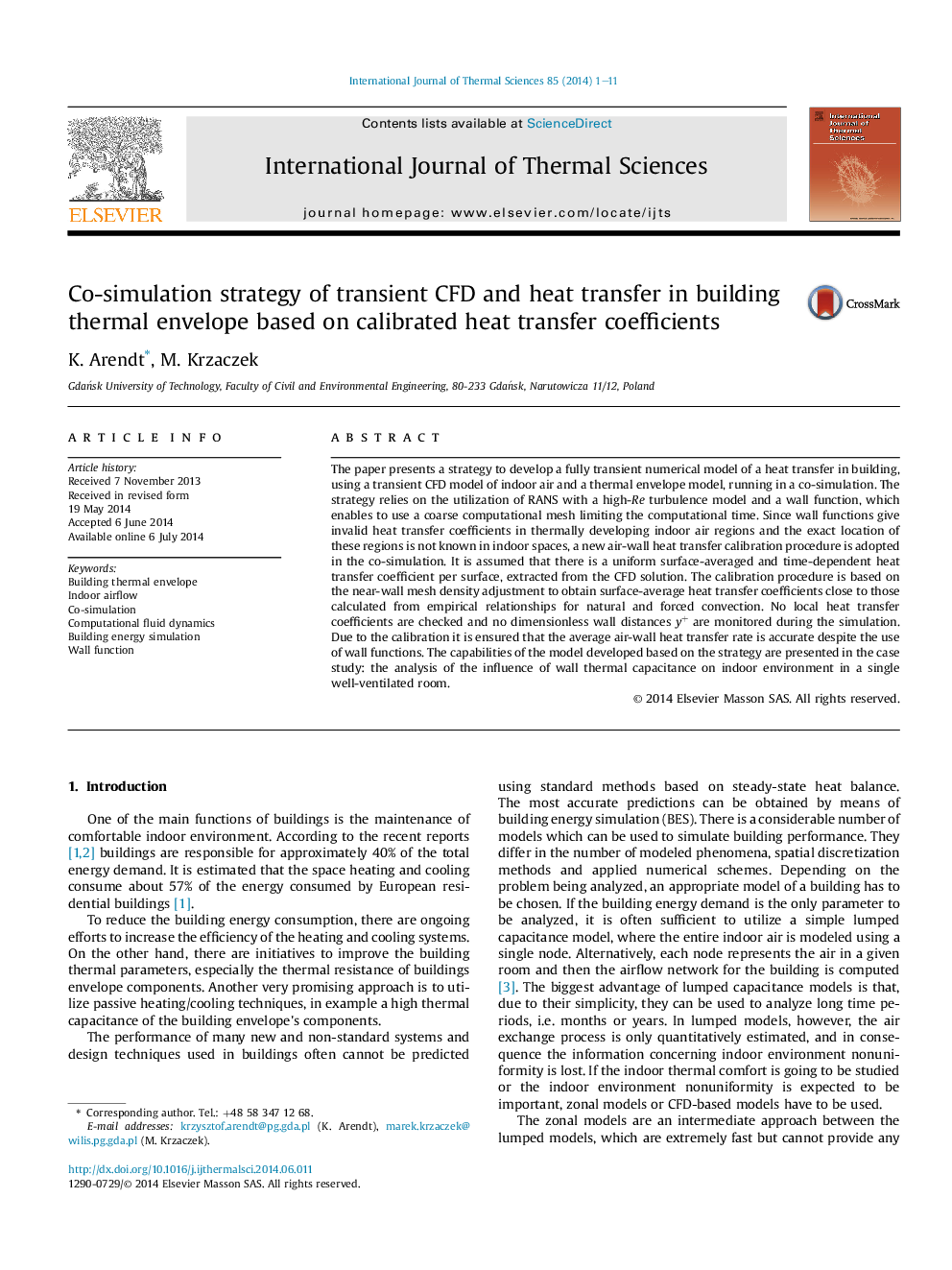| Article ID | Journal | Published Year | Pages | File Type |
|---|---|---|---|---|
| 668221 | International Journal of Thermal Sciences | 2014 | 11 Pages |
•A co-simulation strategy of transient CFD and heat transfer in thermal envelope is proposed.•The heat transfer coefficient varies between empirical values for forced and natural convection.•The method can be used for arbitrary time-dependent boundary conditions.
The paper presents a strategy to develop a fully transient numerical model of a heat transfer in building, using a transient CFD model of indoor air and a thermal envelope model, running in a co-simulation. The strategy relies on the utilization of RANS with a high-Re turbulence model and a wall function, which enables to use a coarse computational mesh limiting the computational time. Since wall functions give invalid heat transfer coefficients in thermally developing indoor air regions and the exact location of these regions is not known in indoor spaces, a new air-wall heat transfer calibration procedure is adopted in the co-simulation. It is assumed that there is a uniform surface-averaged and time-dependent heat transfer coefficient per surface, extracted from the CFD solution. The calibration procedure is based on the near-wall mesh density adjustment to obtain surface-average heat transfer coefficients close to those calculated from empirical relationships for natural and forced convection. No local heat transfer coefficients are checked and no dimensionless wall distances y+ are monitored during the simulation. Due to the calibration it is ensured that the average air-wall heat transfer rate is accurate despite the use of wall functions. The capabilities of the model developed based on the strategy are presented in the case study: the analysis of the influence of wall thermal capacitance on indoor environment in a single well-ventilated room.
Graphical abstractFigure optionsDownload full-size imageDownload as PowerPoint slide
